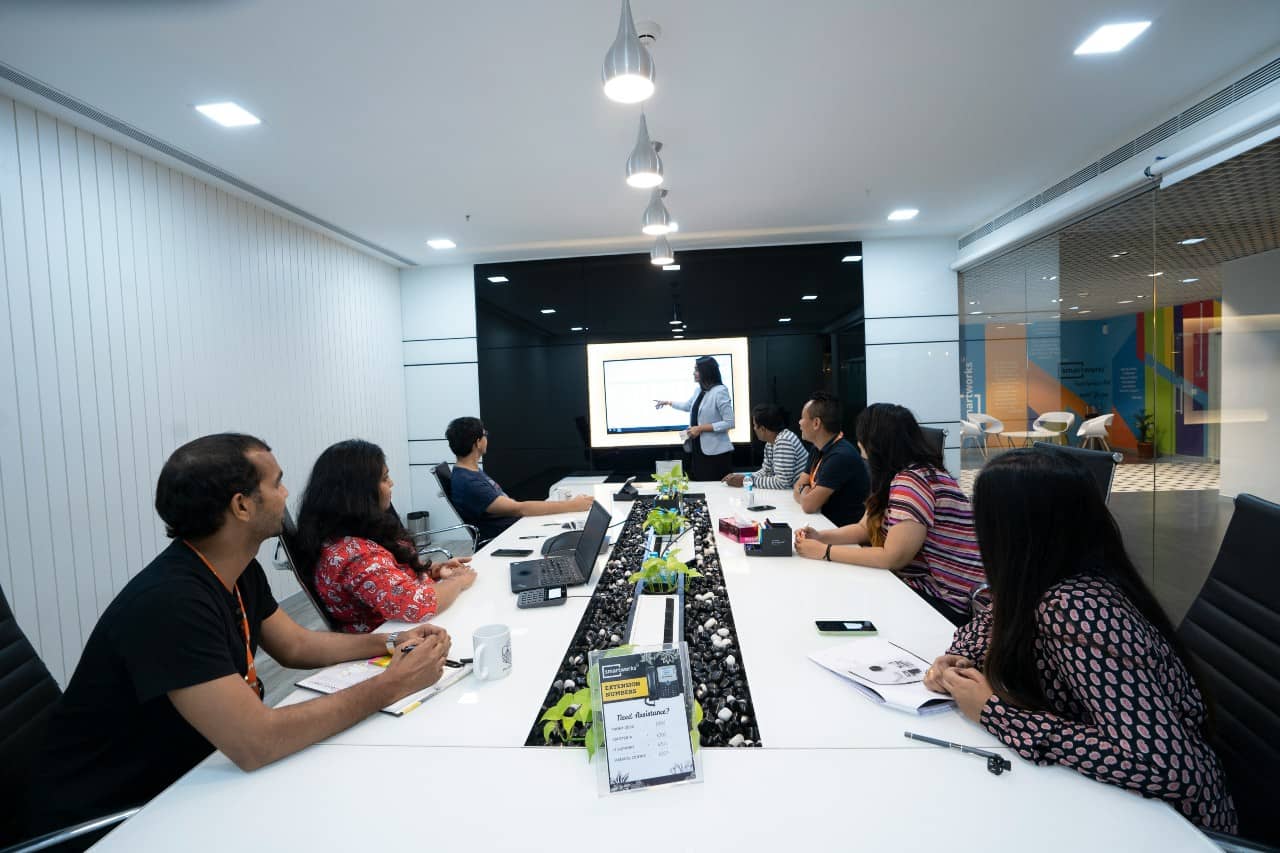Developing Leaders in the 21st Century: Outdated Methodology is Giving Way to Technology-Enabled Solutions
Executive Summary
Over the past decade, the workplace has changed dramatically. Organizational
structures have gotten flatter, managers and employers are spread around the
world and often work together virtually, and everyone is being asked to do
more than less. Meanwhile, the rapidly changing workforce includes boomers,
Gen Xers, Millennials, Gen Ys, and a rising number of contract and part-time
employees, all bringing different backgrounds, needs and expectations.
At the same time, most leadership development programs seem stuck in the past.
Most coaching is focused on senior executives and is conducted in their
offices or by videoconference. Coaching for mid-level leaders – who are
crucial to the success of organizations – usually takes place in group
classroom settings, or is skipped entirely.
Researchers have identified several shortcomings of current leadership
development efforts, including:
- A one-size-fits-all coaching approach
- Failure to address the needs of mid-level leaders
- A gap between learning and actually leading under real-world conditions
- Inadequate metrics for assessing the impact of leadership development programs
- A lack of scalability that makes it hard to provide customized and rapid coaching to large teams
In addition, there has been almost no technology-enabled innovation in
leadership development, despite the fact that we live in the age of anytime,
anywhere communication. Even as organizations move many of their operations to
cloud-based solutions, leadership development remains largely stuck in a pre-
Internet mindset.
Clearly, the marketplace demands a new approach to leadership development, one
that addresses the shortcomings identified above and does so through a
technology-driven solution. Skyline Group’s C4X Coaching for Excellence suite
is one such solution and is a needed improvement that has recently emerged on
the leadership development landscape.
Strategic Shortcomings of Current Leadership Development Solutions
Leadership development is a $14 billion industry1 that serves large global
corporations, startups, and virtually every type of company in between. The
service providers are split between two distinct types: well-known brand names
with global offices, and solo consultants who serve a handful of clients. Even
though the needs and expectations of 21st century leaders are radically
different from their predecessors, leadership development methods are largely
unchanged from decades ago.
The typical program takes place either in the leader’s office or by
videoconference, with the assigned coach using tried-and-true methods to
address what they perceive to be the executive’s greatest weaknesses and
challenges. Some coaching takes place after the executive undergoes a
leadership assessment (which is sometimes only a self-assessment), while
others simply start with the issues the executive thinks they should work on.
There are numerous problems with this model. Most leadership development
programs are one-size-fits-all, despite the fast-changing needs of today’s
organizations and the demographics of a workforce that includes leaders from
many ethnic backgrounds, as well as women leaders, high-potential leaders, and
fast-rising young leaders.
Issues identified by leadership development researchers include:
• Overlooking Context:
Context is a critical component of successful leadership, according to a
recent study by McKinsey, Why leadership-development programs fail.2 “A
brilliant leader in one situation does not necessarily perform well in
another. Too many training initiatives we come across rest on the assumption
that one size fits all and that the same group of skills or style of
leadership is appropriate regardless of strategy, organizational culture, or
CEO mandate.”
• Failing to Support Mid-Level Leaders Within the Organization (aka “The Barbell Approach”):
The majority of today’s leadership development resources are still being spent
on senior executives or “rising stars,” largely ignoring the vast numbers of
mid-level leaders who are often tasked with the most demanding roles within
the organization. “Many companies recognize that they need to do a better job
on middle management training. An April 2012 Harvard Business Publishing
survey on emerging trends in leadership development found that only 28 percent
of organizations felt their development programs had evolved to match the
changing needs of middle managers,” said the authors of Danger in the Middle:
Why Midlevel Managers Aren’t Ready to Lead, from Harvard Business Publishing.
“This ‘barbell’ approach—heavy on the ends, light in the middle—has exacted
a heavy price in terms of underperforming and demoralized middle managers who
lack the networking, planning and team-building skills necessary to excel in
the flat organizational structures that are so prevalent today.”3 “Middle
managers receive fewer resources, manage more people, and are less engaged
than all other employee groups,” according to a Bersin & Associates 2011
report titled Maximizing Middle Managers.
• The Gap Between Learning and Doing:
While recognizing the value in theory-based leadership development programs,
many organizations fail realize that everyday work pressures will likely wipe
away classroom learning in short order. “Even after very basic training
sessions, adults typically retain just 10 percent of what they hear in
classroom lectures, versus nearly two-thirds when they learn by doing.
Furthermore, burgeoning leaders, no matter how talented, often struggle to
transfer even their most powerful off- site experiences into changed behavior
on the front line,” according to McKinsey’s Why leadership-development
programs fail. They added, “Companies should strive to make every major
business project a leadership-development opportunity as well, and to
integrate leadership-development components into the projects themselves.”
• A Lack of Metrics That Matter:
“You can’t manage what you can’t measure” is one of the best summations of the
need for measurement tools in any business. Considering the crucial role that
leadership plays in the success of organizations, consistent methodology for
measuring the value of leadership development programs is still largely
inadequate. According to a 2010 McKinsey Global Survey, “Companies still rely
mostly on self-reported satisfaction with the [leadership development] program
and follow-up 360 assessments to gauge the value of their investment.
Companies also struggle to measure the impact of training on business
performance: 50 percent of respondents say their companies keep track of
direct feedback, and at best 30 percent use any other kind of metric. In
addition, a third of respondents don’t know the return on their companies’
training investment.”
• A lack of scalability that makes it hard to provide customized coaching to large teams:
Since coaching methods have remained largely unchanged, none of the current
approaches is suitable for large-scale and rapid coaching, for instance,
coaching an entire sales team the leadership skills needs to adapt to a new
sales initiative.
Given these critiques and what those of us in the leadership field know from
experience, there is obviously a tremendous gap between the offerings of
leadership development consultants and the needs of today’s fast-paced and
rapidly changing organizations.
Skyline Group’s Technology-Enabled Solution Addresses the Need for New
Approaches
By combining a flexible technology platform with personalized one-on-one
coaching, Skyline Group’s C4X Coaching for Excellence suite of coaching
solutions gives companies the ability to develop all of its leaders
consistently and systematically at each stage of the leadership career cycle.
In particular, C4X Coaching for Excellence is built to address organizations’
need for a coaching solution that develops mid-level leaders, managers, high-
potentials and subject- matter experts\ to become the future source of senior
leadership. Improving organizational performance, navigating changes and
driving initiatives requires that over time each leader is aligned,
experiencing and focusing on the right objectives, and implementing the right
behaviors. C4X achieves this by providing a comprehensive assessment, content,
metrics and coach management system while also allowing for highly effective
and personalized one-on-one\ coaching. It also provides customized content and
coaching tailored to each level of leader in an organization and to the
specific goals of the company.
The C4X Coaching for Excellence solution follows a four-step process: 1)
assessing opportunities, 2) prioritizing objectives, 3) applying new learning,
and 4) measuring individual, team and business results.
Below are deeper dives into how the C4X Coaching for Excellence solution works.
1. Assessing Opportunities
To ensure alignment and organizational success, company-specific information
is gathered, such as company or organization business objectives and key
performance indicators (KPIs); leadership competency gaps the organization
needs to fill; expected outcomes from the C4X development process; and
environment and context considerations. Skyline Group then works with the
organization to determine the optimum way to configure the C4X leadership
development system to address individual, cohort and organization goals.
Linking individual and cohort objectives to business goals ensures that the
return on investment (ROI) for the leadership development initiative can be
measured.
2. Prioritizing Objectives
C4X uses Skyline Group’s Competency-Driven Leadership Development model to
assess leaders on 28 competencies using the 360-degree assessment tool that is
part of the C4X technology platform. The competencies that make up the
assessment have been validated by empirical research as critical-to-effective
leadership and fall under four categories: leading self, leading others,
leading the organization and leading implementation. Although the 28
competencies are universal across companies and industries, C4X allows for the
terms used to identify them to be customized. In this way, C4X supports a
shared company language and a cohesive development effort.
Based on the results of the assessment, the coach, leader and the leader’s
manager identify three competencies for development and the related goals that
further the company’s current objectives. Open communication is key during
this step as the three parties work together to establish clear objectives and
set reasonable expectations.
3. Applying New Learning
The C4X program is then configured to support the leader in achieving these
goals using an on-the-job learning model. It provides individually tailored
development roadmaps whereby new content is opened up weekly and can then be
accessed online at any time. In addition, the leader works one-on-one with a
coach who supports the learning process and helps him or her apply the
learnings to his or her work life.
A majority of the development effort stems from testing out new behaviors when
and where it counts: in the workplace. New concepts, methods, and tools are
introduced via the technology platform and one-on-one coaching provides
context, guidance and new thinking to help bring learning to life and make it
stick. The coach reinforces the connection between the program, company
initiatives and the individual’s own goals, projects, and motives. The
connection and personal relationship between coach and coachee enables a
lasting transformative experience.
4. Measuring Individual, Team and Business Results
A major issue associated with leadership development programs—and coaching in
particular—is the lack of measurement and tracking capabilities. As a digital
platform, C4X allows multiple streams of data to be tracked, synthesized and
presented to authorized administrators. Tracked data includes individual
participant goals, participation and engagement, goal and skill improvement,
as well as big-picture cohort and program-wide analytics. Administrators can
easily understand not only the impact of the program on individuals and
cohorts, but also identify skills gaps, strengths and opportunities within the
company as a whole. In this way C4X allows a company to be proactive in making
strategic decisions.
The C4X system reassesses participants halfway through and at the end of the
development process to measure improvements in the competencies they have been
developing. Other metrics C4X can track include business results like time-to-
productivity for new hires, increased revenue for sales teams, increased
customer retention for customer service teams, project cost-savings for
strategy executives and teams, and career development and turnover for
leaders.
Conclusion
Leadership development is a huge challenge facing many organizations, which
continue to invest significantly in such programs, but with uneven and
unpredictable results. Leadership development programs often fall short due to
a lack of context, little or no real-world application, an absence measurable
results, and a failure to adapt to leaders at all stages of the career cycle.
Furthermore, most leadership development solutions are stuck in a pre-Internet
mindset, relying almost exclusively on face-to-face meetings with senior
executives and group training sessions for other leaders. There has been
little innovation thus far that addresses organizations’ increasing demand for
scalable, rapid, technology-enabled leadership development programs,
particularly for mid-level leaders.
By combining a flexible and scalable technology platform with personalized
one-on-one coaching, Skyline’s C4X Coaching for Excellence suite of coaching
solutions gives companies the ability to develop all of its leaders
consistently and systematically at each stage of the leadership career cycle.
References:
1 Karen O’Leonard and Laci Loew, Leadership development factbook® 2012:
Benchmarks and trends in US leadership development, Bersin & Associates, July
2012
2 Pierre Gurdjian, Thomas Halbeisen and Kevin Lane, “Why leadership-
development programs fail, McKinsey Quarterly, January 2014.
3 Robert McKinney, Michelle McMahon and Peter Walsh, “Danger in the middle:
Why mid-level managers aren’t ready to lead,” Harvard Business School
Publishing Corporate Learning, white paper, 2013.
4 “Building Organizational Capabilities: McKinsey Global Survey Results, March
2010.
5 Thuy Sindell and Milo Sindell, Hidden Strengths: Unleashing the Crucial
Leadership Skills You Already Have, Berrett- Koehler Publishers, Oakland
(2015), 30-40.





